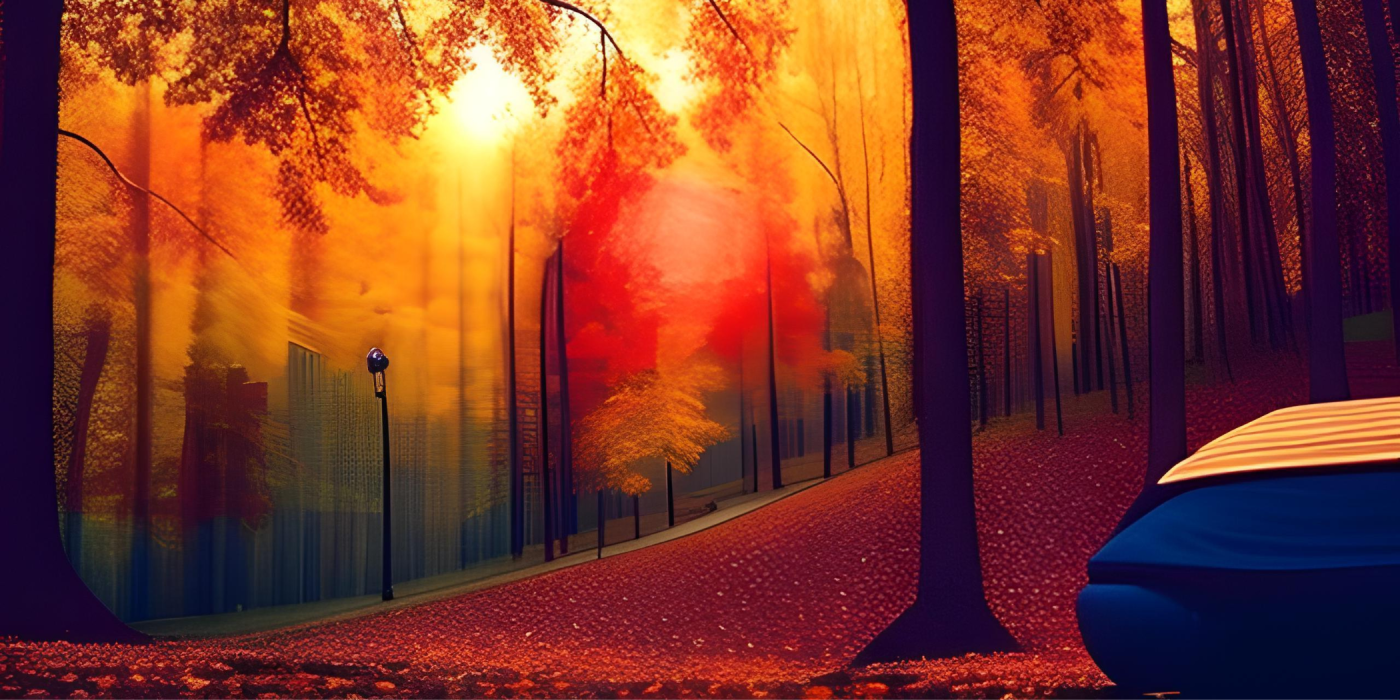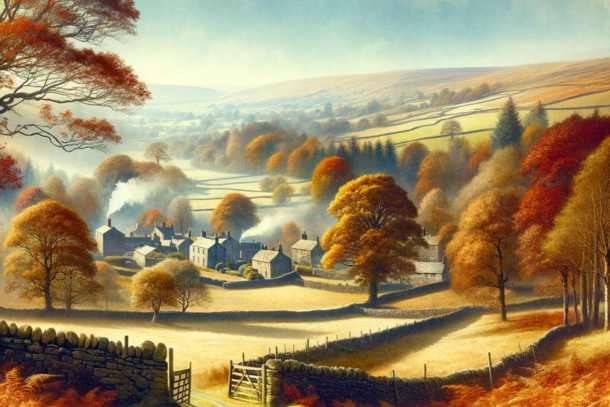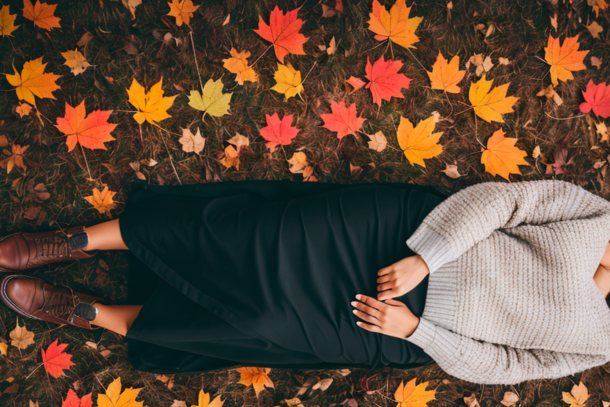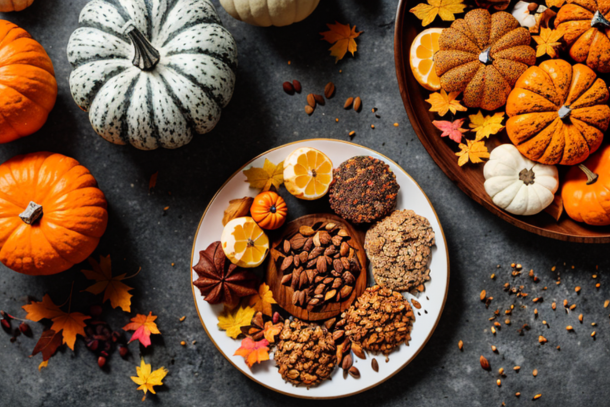Autumnal Slumber: Understanding Our Seasonal Sleep Patterns

As the British landscape begins its majestic transition, characterised by hues of amber and a distinct chill in the air, many of us notice an interesting phenomenon. Without necessarily realising it, we often find ourselves gravitating towards our duvets a tad earlier, or wishing we could hit the snooze button just one more time. This isn't a mere coincidence, nor is it purely the result of chillier evenings. It's an intricate dance of biology, environment, and psychology.
The Observable Shift in Sleep Patterns
Autumn ushers in not just a change in scenery, but a marked shift in our sleep patterns. With the days growing shorter and nights stretching longer, our internal body clocks, or circadian rhythms, begin to adjust accordingly. Many Brits report feeling more fatigued earlier in the evening and find it harder to rise and shine as promptly in the morning.
Circadian Rhythms and Light Exposure
Our circadian rhythms are profoundly influenced by light exposure. As Autumn progresses, the diminishing daylight signals to our brain that it's time to wind down sooner, leading to increased melatonin production—the hormone responsible for sleepiness.
Embracing Autumn's Sleepy Embrace
It's not uncommon during this season to feel a natural inclination to retreat and rest. As the nights draw in, there's a collective, almost instinctual, gravitation towards cosier evenings and longer nights under the covers. This is our body's way of adapting to the changing environment and preparing us for the colder months ahead.
The Science of Light and Sleep:
In the UK, as the long summer days give way to Autumn's cosy evenings, many of us find our sleep patterns subtly shifting. But what drives this change? The answers can be found by delving into the complex interplay between light and our body's inner clock.
Circadian Rhythms and Light Sensitivity:
Our body operates on an internal clock, known as the circadian rhythm. Governed primarily by the hypothalamus in the brain, this rhythm determines our wakefulness and sleepiness throughout a 24-hour period. One of its most significant influencers is light. When our eyes detect natural daylight, signals are sent to our brain to reduce the production of the sleep hormone, melatonin, making us feel more alert.
In contrast, as the light diminishes in the evening, melatonin production increases, ushering in feelings of sleepiness. This sensitivity to light ensures we are in tune with the environment, rising with the sun and settling down as it descends.
The Autumnal Effect on Melatonin Production:
Come Autumn, the UK experiences earlier sunsets and prolonged nights. As a result, our exposure to natural daylight decreases, leading to a more extended melatonin production phase. This naturally encourages an earlier onset of sleepiness in the evenings and, for some, a prolonged period of sleep at night. The shortening days act as nature's gentle nudge, prompting us to rest, recuperate, and recharge amidst the backdrop of rustling leaves and cooler breezes.
In understanding this scientific interplay, we can better appreciate and adapt to the seasonal shifts in our sleep patterns.
The Drop in Temperature
As the vibrant hues of summer fade, giving way to the misty charm of Autumn, the UK witnesses a notable drop in temperatures. This shift in the mercury isn’t just a cue to pull out your favourite jumpers and scarves, but it also has a profound influence on our sleep.
How Cooler Temperatures Influence Sleep
Our bodies instinctively find cooler temperatures more conducive for deep and restorative sleep. A bedroom that's too hot can disrupt the body's natural dip in temperature that happens during the night, leading to restless tossing and turning. In contrast, the cool embrace of an Autumn evening allows us to snuggle up, making the process of drifting into slumber both swift and smooth.
The Science Behind It
A slight drop in our core body temperature can signal the brain to produce melatonin, the hormone responsible for sleepiness. As the nights become chillier in Autumn, this natural dip is accentuated, often making us feel sleepier earlier in the evening.
Thermoregulation and Sleep Cycles
The body's ability to maintain its internal temperature, known as thermoregulation, plays a crucial role in sleep architecture.
The Role of REM Sleep
During the REM (Rapid Eye Movement) stage of sleep, the body’s ability to regulate temperature reduces. If the room is too warm, this can disrupt the REM cycle. However, a cooler environment complements this stage, leading to uninterrupted dreams and a more refreshing morning wake-up.
In essence, as the British Autumn cloaks us in its crisp air, our bodies respond favourably by easing into deeper, more rejuvenating sleep cycles.
Energy Conservation
When the days grow shorter and the temperature dips, many of us find ourselves feeling more sluggish and inclined to rest. But have you ever wondered why?
The Evolutionary Perspective
Our ancestors did not have the luxury of central heating or supermarkets. As winter approached, with its scarcity of food and harsher conditions, it was evolutionary advantageous to slow down and conserve energy. The inclination to sleep more during the colder months could be seen as a survival mechanism. By resting more, early humans could reduce calorie expenditure, preserving their energy and fat stores for the challenging winter months ahead.
Traces in Modern Lifestyles
While we now live in a world with year-round food availability and the comfort of heated homes, some of those deep-rooted patterns remain. Our bodies, tuned to nature's rhythms for millennia, still respond to the cues of decreasing light and falling temperatures. As a result, even in our bustling 21st-century life, we may find ourselves drawn to earlier bedtimes or longer lie-ins during Autumn. The instinct to curl up with a good book, watch a film, or simply snuggle under a warm duvet as the evenings become chillier, all hark back to this ancient impulse to conserve energy as the environment around us changes.
In essence, while our surroundings and daily routines have evolved dramatically, the underlying biological rhythms, shaped by the ebb and flow of seasons, remain remarkably consistent. And so, our increased desire to sleep in Autumn is a subtle nod to the wisdom of our ancestors and the age-old dance between humans and nature.
Seasonal Affective Disorder (SAD)
Understanding the Symptoms and Causes of SAD
Seasonal Affective Disorder, commonly abbreviated as SAD, is a type of depression that emerges at specific times of the year. It's most prevalent during the Autumn and Winter months in the UK, when daylight becomes increasingly scarce. The symptoms often mirror those of conventional depression but are seasonally bound. Individuals may experience a persistent low mood, a loss of interest or pleasure in everyday activities, irritability, feelings of despair, guilt, or worthlessness, and a lack of energy. One distinct symptom that differentiates SAD from other forms of depression is the craving for carbohydrates and subsequent weight gain.
The precise cause of SAD remains a topic of study, but several theories prevail. Reduced sunlight can lead to a drop in serotonin, a neurotransmitter that affects mood, appetite, and sleep. Additionally, the change in seasons can disrupt the balance of the body's internal clock or circadian rhythm, which can lead to symptoms of depression.
The Link Between SAD and Increased Sleep
One of the hallmark symptoms of SAD is hypersomnia, or the tendency to sleep more than usual. As the darker months of Autumn set in, those affected by SAD might find themselves feeling sleepier earlier in the evening and struggling to rise in the morning. This change in sleep pattern is not merely a response to reduced light, but also a potential increase in melatonin production, a hormone responsible for regulating sleep, which might be produced in larger quantities during these darker months.
By understanding these patterns and the connection between Autumn, SAD, and sleep, individuals can better prepare and seek suitable treatments or interventions.
Dietary Changes: Navigating Autumnal Feasts for Restful Sleep
As the days grow shorter and a chill fills the British air, our dining tables start to see a shift in the kind of dishes that take centre stage. Warming casseroles, hearty soups, and baked puddings become the favourites, making us lean into the comfort of Autumnal cuisine. However, what many might not realise is that these comfort foods, particularly the ones we crave as the season changes, can significantly influence our sleep.
The Comforting Embrace of Autumnal Foods
Autumn has always been synonymous with harvest festivals and bountiful produce. The foods of this season, rich in carbohydrates, not only provide warmth and energy but also play a role in our sleep patterns. Consuming carbs increases our serotonin levels, a neurotransmitter that promotes feelings of well-being and happiness. As the evening draws in, serotonin is converted to melatonin, our sleep hormone, thus aiding in ushering in a peaceful night's rest.
Carbohydrates and Tryptophan: A Sleepy Duo
It's not just about carbs, though. Tryptophan, an essential amino acid found in many protein-based foods like turkey, milk, and nuts, further boosts serotonin levels. When paired with carbohydrates, tryptophan finds it easier to cross the blood-brain barrier, making its effects even more potent. This powerful combination can lead to an increase in sleepiness, especially after a hearty meal.
Conclusion
So, the next time you find yourself reaching for that extra serving of shepherd's pie or a slice of apple crumble, know that your body is not just seeking warmth and comfort but also prepping for a long, restful slumber. As with everything, moderation is key. While indulging occasionally is part of the Autumnal charm, balance is essential to ensure we get the best out of what the season has to offer, both gastronomically and restoratively.
Physical Activity and Hibernation Instincts
Reduced Activity Due to Environmental Changes
As the British Autumn sets in with its signature chilly breezes and shorter days, many of us find a marked decrease in our daily physical activity. The inviting warmth of summer that beckoned us outdoors for jogs, picnics, or even just a stroll in the park gradually fades. Instead, the cooler weather and diminishing daylight hours tend to encourage more indoor, sedentary activities. It's not uncommon to swap evening runs for mugs of hot cocoa by the fireplace or weekend hikes for film marathons wrapped up in blankets.
The Body's "Semi-Hibernation" State
Intriguingly, our modern-day behaviours echo those of our ancestors and even some animals. During the colder months, many creatures enter hibernation — a state of inactivity and metabolic depression. While humans don't hibernate in the true sense of the word, we do exhibit what can be termed as a "semi-hibernation" instinct during Autumn.
Our bodies seem to be hardwired to slow down as the days shorten. This is, in part, a survival mechanism. Historically, shorter days and colder temperatures meant fewer resources, so it made sense to conserve energy. Today, even with the luxuries of central heating and supermarkets, our primal instincts still subtly push us towards conserving energy, making us more inclined to rest, relax, and yes, sleep a bit more.
This naturally reduced level of activity and our body's inclination towards rest during Autumn can contribute significantly to the additional hours of sleep or rest we tend to seek.
Changes in Social Activities:
As the balmy summer afternoons give way to the mellow ambience of Autumn, our social activities inevitably undergo a transformation.
The Shift from Outdoor to Indoor:
The cherished barbecues, picnics, and late-night soirees in the garden gradually make way for more intimate, indoor gatherings. The sun setting earlier means our evenings start sooner. This naturally encourages earlier dinners, film nights wrapped under a blanket, or a fireside chat with a steaming cuppa. Consequently, these serene, indoor activities often promote earlier bedtimes compared to the lively energy of summer evenings spent outdoors.
The Allure of Cosy Evenings:
There's an undeniable charm to the British Autumn evening spent indoors. The flickering candlelight, the soft melodies playing in the background, and the embrace of a warm jumper – these are simple pleasures but deeply comforting. This psychological comfort isn't merely about warmth or safety; it's about a state of mind. As the trees shed their leaves outside, we humans too feel an intrinsic need to shed our daily stresses and seek solace in the cosiness of our homes. Such snug evenings, while they induce a sense of tranquillity, often make us more predisposed to falling asleep earlier, fully embraced by the comfort of our surroundings.
In essence, the shift in our social engagements, influenced by the changing season, plays a subtle yet significant role in our sleep patterns. The Autumn, with its invitation to introspect and relax, nudges us towards earlier bedtimes and more restful nights.
Autumn Allergies and Sleep:
One of the lesser-discussed influences on our Autumnal sleep patterns in the UK is the presence of specific allergens. Just as the trees shed their leaves and the scenery undergoes a russet transformation, the air is filled with various allergens that can have an unforeseen impact on our sleep.
The Pervasiveness of Autumn Allergens:
Autumn brings with it a cocktail of allergens. While we often associate hay fever with the balmy days of summer, the truth is that the Autumn months, particularly September and October, can be just as troublesome for allergy sufferers. Mould spores, both indoors and outdoors, increase due to wet fallen leaves and damp environments. Ragweed pollen also becomes particularly prevalent, causing a condition often dubbed as "Autumn hay fever."
The Fatigue Factor:
These allergens don't merely cause sneezing or itchy eyes; they play a pivotal role in causing fatigue. The body, in its attempt to ward off these allergens, releases histamines. While histamines are effective in countering allergic reactions, they also lead to symptoms of drowsiness. This is why many over-the-counter antihistamines are often known to cause sleepiness as a side effect.
Immune Response and Its Sleep Connection:
When our immune system goes into overdrive to combat these allergens, it can result in inflammation. This immune response not only drains our energy resources but also nudges us to sleep more, allowing the body to heal and recuperate. In essence, as the body combats Autumn allergens, increased sleep can be a protective and restorative measure.
In understanding this connection, we gain a deeper appreciation for the body's innate wisdom and its continual effort to maintain balance and health, especially during the transitional season of Autumn.
Understanding Our Autumnal Slumber
As we wrap up our exploration into the world of Autumn and its effects on sleep, it becomes abundantly clear that the transition from summer to Autumn isn't just marked by the changing hues of leaves or the chill in the air. It's a time when our body, in its innate wisdom, responds to the shifting environment in ways that are both intricate and profound.
The Symphony of Factors
Our sleep patterns during these months are influenced by a symphony of factors. From the dwindling daylight hours affecting our circadian rhythm to the cooler nights that beckon a deeper sleep, our biology and environment conspire in harmony, nudging us towards a lengthier and often more restful slumber.
Embracing the Natural Shift
While modern life sometimes demands we fight against these natural inclinations with artificial lights and heated homes, there's a beauty in understanding and accepting this seasonal shift. Recognising the pull of the cosy duvet on a cold morning isn't just a lack of willpower; it's a millennia-old response to the world around us.
Nurturing Self-awareness and Compassion
With this newfound knowledge, it's essential we nurture a sense of self-awareness and compassion. Rather than berating ourselves for that extra hour under the covers, let's celebrate the fact that our bodies are finely tuned to the rhythms of the Earth. Such attunement is, in many ways, a testament to the intricate dance between nature and ourselves.
In essence, Autumn is more than just a season of change; it's a gentle reminder of our deep-rooted connection to the world, and how beautifully we are adapted to its ever-evolving song.
Related to this article are the following:
I do hope you have enjoyed this article and hope that you will subscribe to my newsletter so you can get the latest information about all things naturally relaxing.
Stay in touch, join the Naturally Relaxing Newsletter
Newsletter Signup
Post Your Comments
or post as a guest
Be the first to comment.
Latest articles in Sleep

The Power of Waterfall Sounds for Enhanced Sleep Quality

Embracing Autumn: Sleep Routines for the British Season

Crafting the Ideal Autumnal Sleep Sanctuary

Savouring Autumn: Foods to Enhance Your Sleep

The Perfect Autumnal Bedroom Colour Palette for Relaxation






